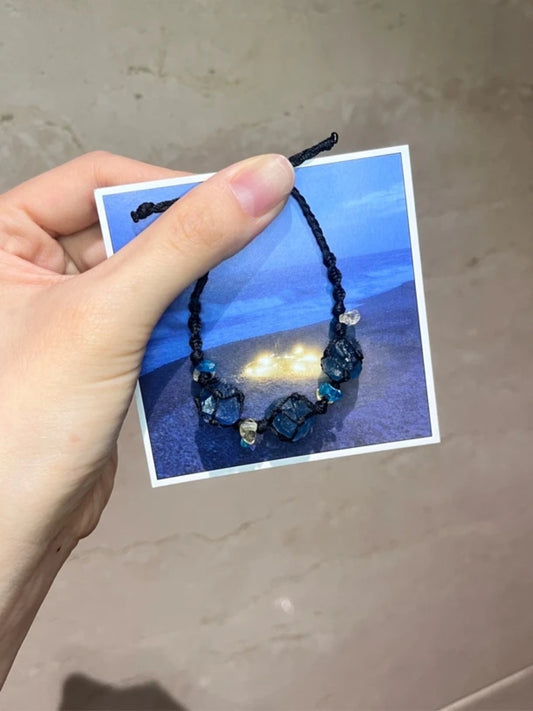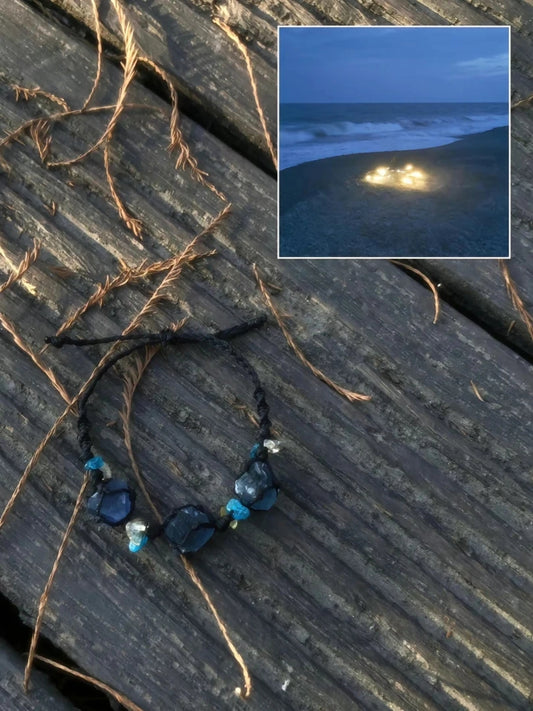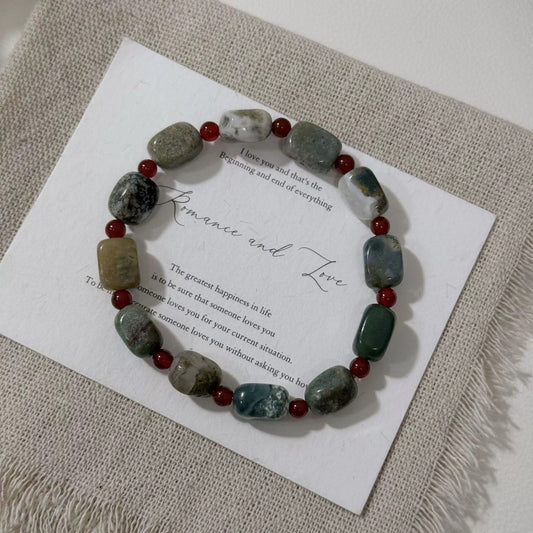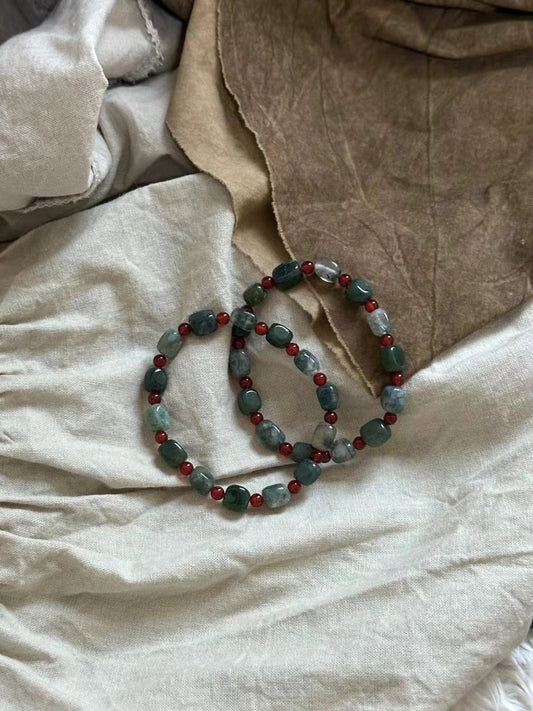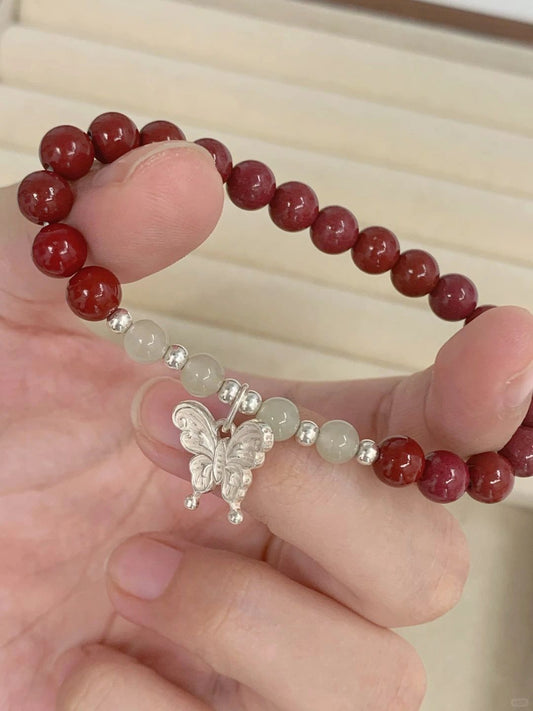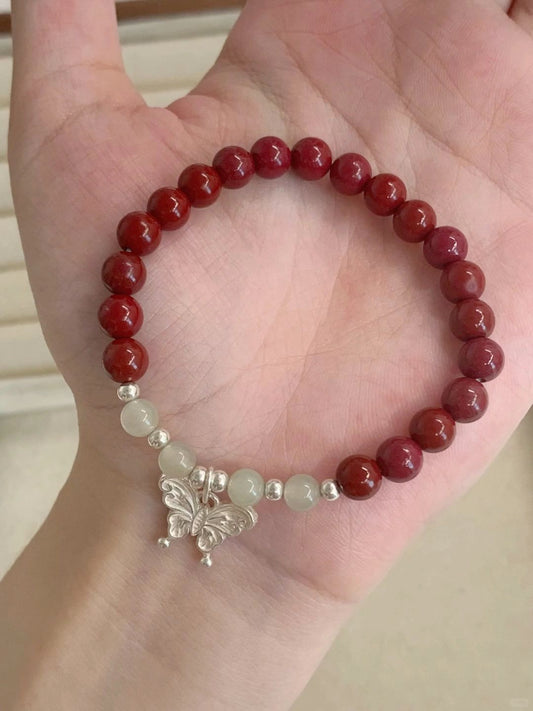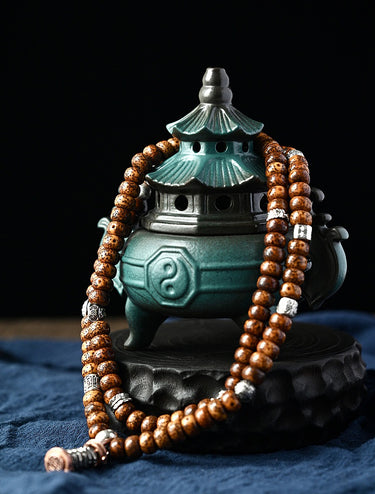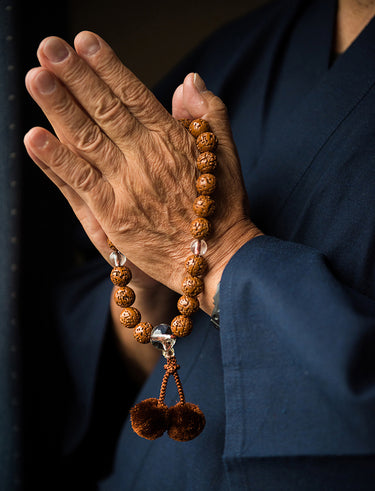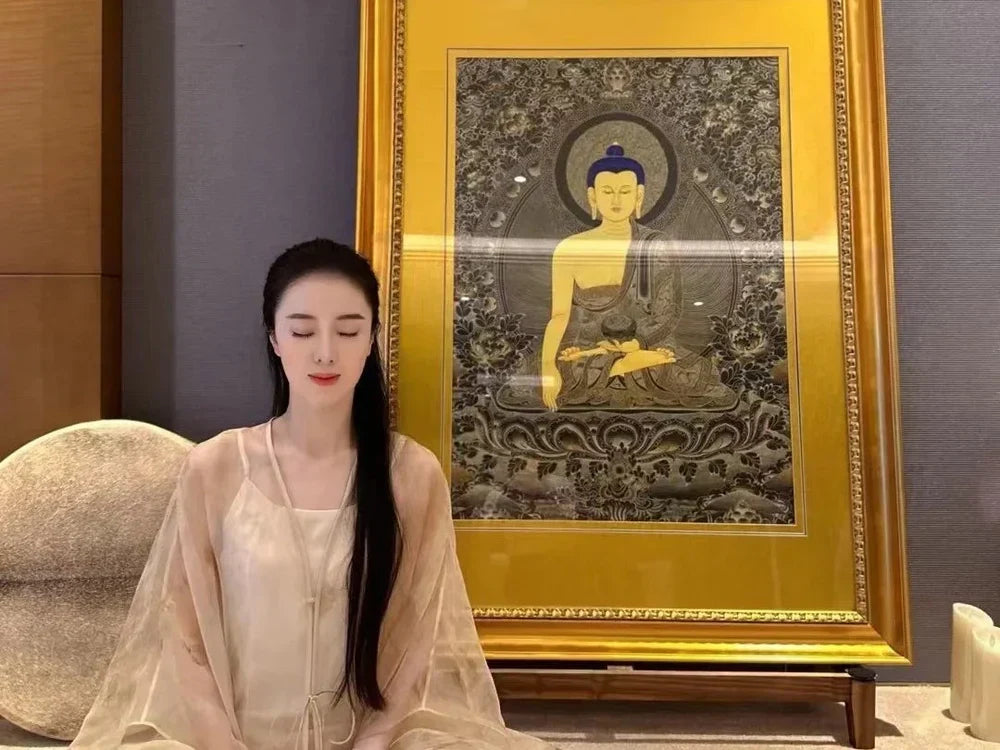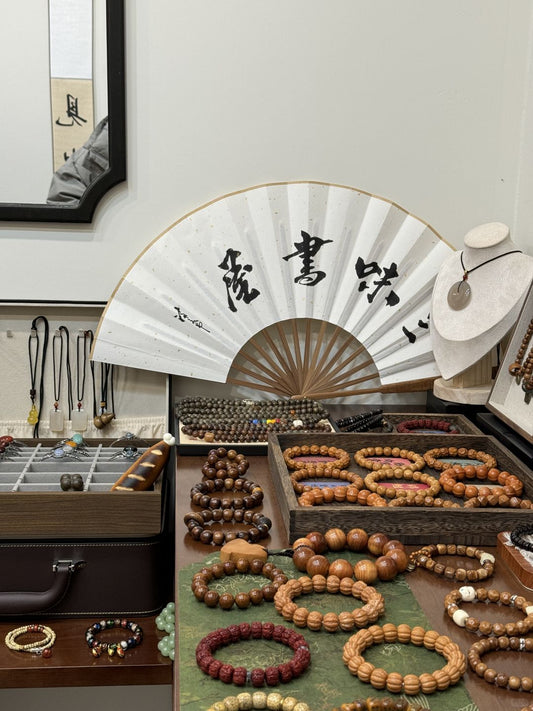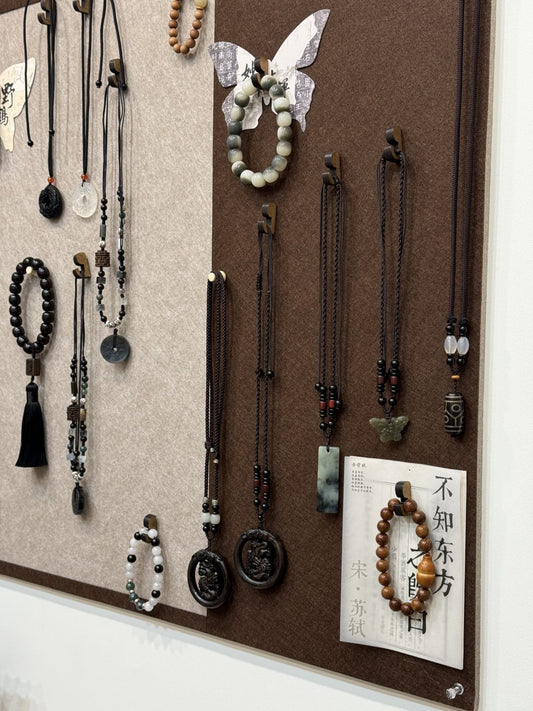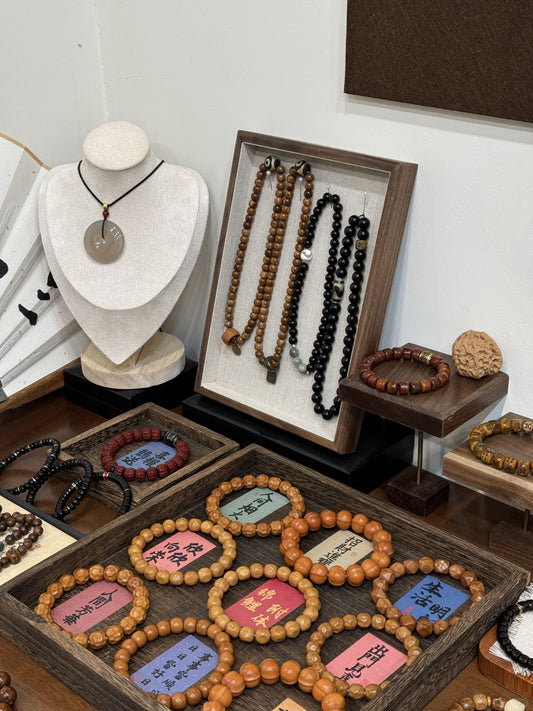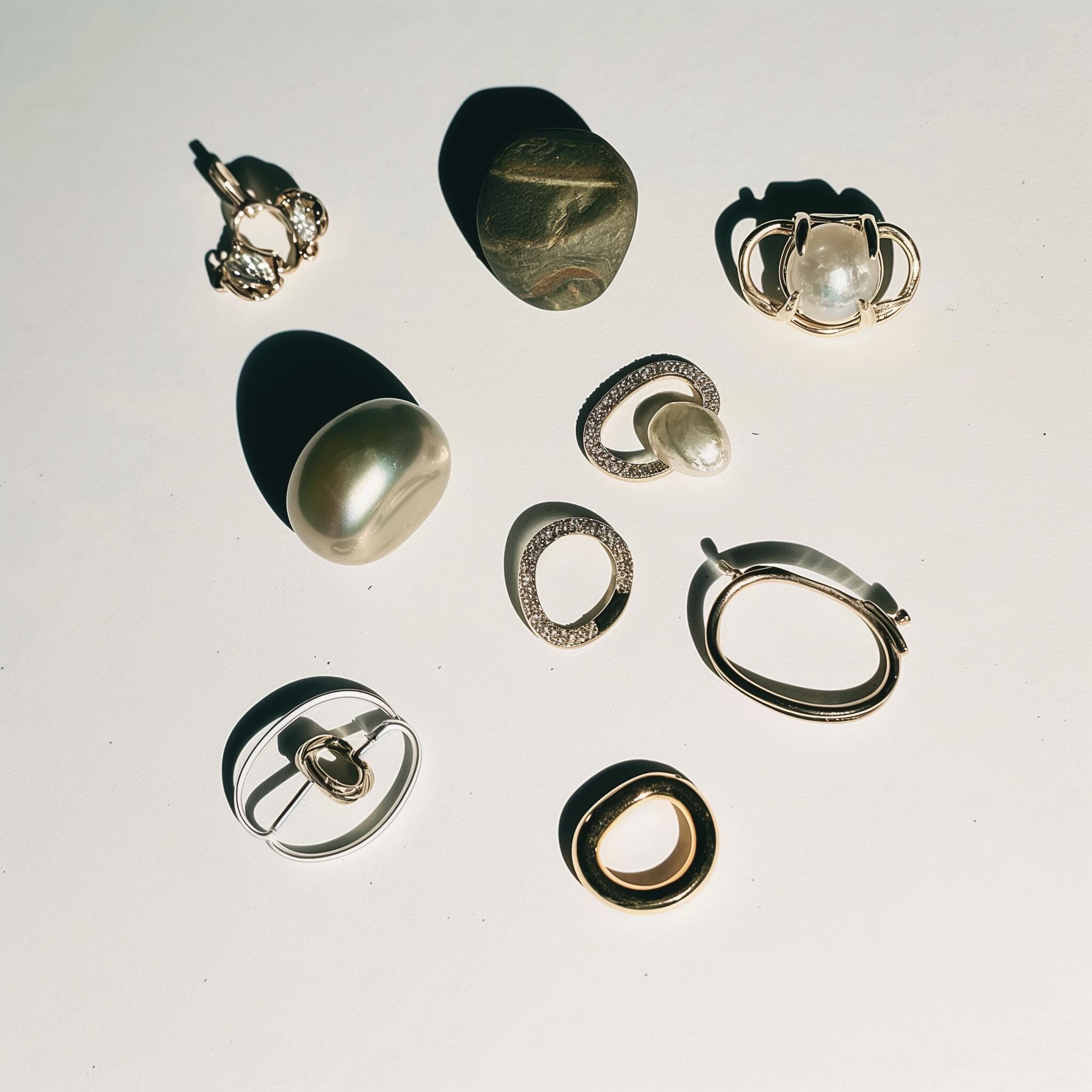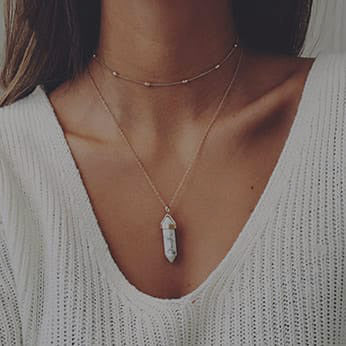Thangka-Inspired Home Decor: Beyond Jewelry to Sacred Space
Thangka art—originally large-scale, hand-painted scrolls depicting Buddhist deities, mandalas, and sacred narratives—has inspired a new wave of home décor for modern living spaces. By translating these expansive images into scaled-down versions like mini-scrolls, decorative panels, and tabletop altarpieces, Mabge brings the calming presence of Tibetan spiritual heritage into contemporary homes and offices. This post explores how to integrate Thangka-inspired pieces into a “micro-shrine,” pairing a small Buddha statue with a brass or ceramic incense burner to create a peaceful corner for meditation or mindful reflection.

The Legacy of Thangka Art
Thangka paintings have long been central to Tibetan Buddhist practice. Traditionally hung in monasteries or private chapels, these detailed scrolls guide practitioners through iconography, meditation, and ritual. Featuring mineral-based pigments—malachite green, cinnabar red, and lapis lazuli blue—Thangka art embodies both spiritual teaching and cultural preservation. Transmitting these visuals to smaller formats allows people to honor the tradition while adapting to limited living spaces.

From Temple Walls to Miniature Murals
-
Canvas Preparation: A true Thangka artist first applies several layers of gesso (a mixture of animal glue and chalk) to achieve a smooth, lasting surface. For mini-scrolls, artisans use high-quality cotton or silk canvas treated in the same way, ensuring that the pigment binds correctly and retains luminosity over time.
-
Pigment and Gold Leaf: Even in scaled-down versions, mineral pigments provide vibrant details. Modern micro-Thangka painters still grind malachite and cinnabar, combining them with plant-based binders. Tiny flecks of gold leaf highlight halos and embellishments, creating a subtle glimmer when light hits the piece.
-
Detailing with Fine Brushes: Translating a full-size mandala—often several feet in diameter—into a 6-inch panel challenges an artist’s precision. Using ultra-fine sable or goat-hair brushes, the painter outlines each deity, lotus petal, and ornamental border in miniature form, preserving the original proportions and symbolic layout.

Creating a Micro-Shrine: Practical Tips
A “micro-shrine” provides a daily reminder of compassion, wisdom, and inner peace. Even in a compact apartment or a busy office, a thoughtfully arranged corner can become a sacred refuge.
-
Choose Your Mini-Thangka Piece
-
Wall-Hung Scrolls (Mini-Scrolls): Opt for a Thangka that depicts a simple deity—such as Green Tara or Medicine Buddha—framed by a narrow silk brocade border. Hang it near eye level so it catches natural light without direct sun exposure, which can fade pigments over time.
-
Decorative Panel: A framed, canvas-mounted Thangka section—perhaps a single lotus or Vajradhara mandala—can function as standalone decor. Place it on a console table or shelf, leaning gently against the wall.
-
-
Select a Protective Amulet or Shrine Statue
-
Miniature Buddha Statue: A small brass or silver statue serves as the focal point. Choose an icon that resonates—such as Shakyamuni Buddha for peaceful presence, or Avalokiteshvara (Chenrezig) for compassion. Ensure it’s solidly crafted so it stands securely.
-
Thangka Ganesh or Tara Figurine: If a statue feels too heavy, consider a Thangka-inspired plaque—an embossed metal plate depicting a protective deity. These can rest on a small wood stand.
-
-
Pair with a Brass or Ceramic Incense Burner
-
Brass Burner (Tibetan Style): Look for one modeled after a traditional kora design, with perforated openings along the sides. When you burn resin incense or cones, slow-rising smoke wafts around your Thangka panel, evoking the atmosphere of a temple.
-
Ceramic Lotus Burner: A white-glazed ceramic burner in the shape of a lotus blossom adds a gentle, organic contrast. Its interior holds a small charcoal disc to warm powdered juniper or sandalwood incense.
-
-
Anchor with Supporting Elements
-
Offering Bowl: A shallow brass or silver bowl can hold fresh flowers, water, or rice grains—symbolic offerings that connect you to the lineage of practitioners.
-
Singing Bowl or Bell: A small Himalayan singing bowl (3–4 inches diameter) and wooden striker allow you to begin and end your morning or evening practice with a clear, resonant tone.
-
Textile Mat or Cushion: Place a folded silk or cotton cloth beneath your shrine items to protect surfaces and visually frame the setup. Opt for colors that complement your Thangka’s dominant hues—deep reds, blues, or golds.
-
Arranging Your Sacred Space
-
Location Matters
-
Quiet Corner: Choose a shelf, side table, or dedicated nook away from high-traffic areas.
-
Natural Elements: If possible, position near a small potted plant or a bowl of river stones to ground the energy.
-
-
Layering and Balance
-
Vertical Hierarchy: Place your Thangka mini-scroll or decorative panel slightly above eye level. Below, center your shrine statue on a small wooden tray or low box.
-
Horizontal Symmetry: On either side of the statue, set the incense burner and an offering bowl or candleholder. This balanced layout rhythmically mirrors the bilateral symmetry found in full-size temple altars.
-
-
Daily Care Ritual
-
Morning Ritual: Upon waking, light your incense burner, offer a simple bow to the Thangka image, and spend a few silent breaths reflecting on your intention for the day (e.g., compassion, equanimity).
-
Evening Reset: Before day’s end, clear spent offerings, wipe your shrine components with a soft cloth, and gently polish brass or ceramic elements as needed. This small act of reverence keeps your space vibrant and energetically clear.
-

Why a Micro-Shrine Matters in Modern Life
-
Anchors Mindfulness: In a world of constant digital noise, a “sacred corner” offers a visual and tactile reminder to pause. Even glimpsing your Thangka panel mid-day can prompt a moment of stillness.
-
Fosters Intentionality: Setting aside minutes each morning and evening to honor your micro-shrine cultivates discipline—transforming an apartment shelf into a place of refuge and reflection.
-
Maintains Cultural Connection: Owning and displaying authentic Thangka-inspired pieces preserves Tibetan artistic traditions and supports the artisans who uphold these age-old techniques.










































































































